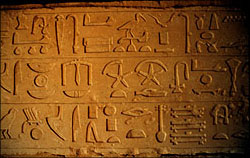Lesson
10 Essay
The
Teotihuacan, established around 100 BC, were located in the valley of
Mexico. They built very grid-like cities with streets going
north-south and east-west directions. They continued to build their
cities until around 250 AD. The city was, at it's peak, much larger
than the city of Rome. They built adobe huts for the poor and the
richer people got single story houses.
The
Teotihuacan were very famous for the stepped pyramids with temples at
the top that they built. The largest of these temples is the Pyramid
of the Sun.
Pyramid of the Sun
They
also had multiple trades: They were very agricultural. They were
merchants in the salt trade. They were also very good potters; they
had a thin orange pottery style that spread through Mesoamerica. They
made weapons and tools from obsidian. Onyx and jade were used for
decoration, along with carved shells and ear spools.
Sadly
though, the Teotihuacan civilization was destroyed by fire in 750 AD.
They left no written records except calenders.
The
Olmec people were the first major civilization in Mexico. They lived
in a tropical, jungle region of South-central Mexico. They had three
major religious centers: San Lorenzo, La Venta, and Tres Zapotes. The
Olmec also
built stepped pyramids with temples on top like the Teotihuacan.
Their gods were animal heads carved out of of stone. These heads can
be found on the walls of the temples.
The
Olmec are most known for their huge, artful head statues carved from
volcanic rock. Their writing was much like the Egyptian writing. They
used hieroglyphs, but, instead of one hieroglyph per one word or
phrase, the Olmec used one hieroglyph per syllable.
The
majority of the Olmec people lived in villages. These villages were
located on higher ground and consisted of several scattered houses. A
modest temple may have been associated with the larger villages. The
individual dwellings would consist of a house, an associated lean-to,
and one or more storage pits. They traded for obsidian, basalt, and
jade.



